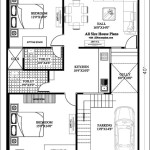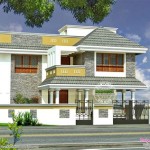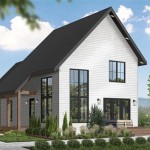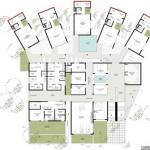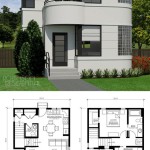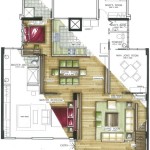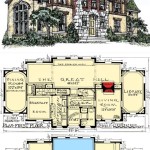Single Story Farmhouse Plans With Wrap Around Porch Designs 2024
The enduring appeal of the farmhouse style continues to influence residential architecture, and in 2024, single-story farmhouse plans with wrap-around porches are experiencing a notable resurgence. This design marries the practicality of single-level living with the aesthetic charm and outdoor connectivity that define the farmhouse vernacular. The integration of a wrap-around porch elevates the design, providing an expansive outdoor living area that enhances the overall functionality and visual appeal of the home.
This article delves into the key considerations for selecting and implementing single-story farmhouse plans with wrap-around porches in 2024. It will explore the design elements that contribute to this style's popularity, focusing on spatial planning, material selection, and the integration of modern amenities with traditional farmhouse characteristics.
Understanding the Allure of Single-Story Farmhouse Design
Single-story farmhouse plans provide several advantages, particularly for homeowners seeking accessibility and ease of maintenance. The absence of stairs makes these designs ideal for aging in place, accommodating individuals with mobility limitations, and simplifying daily tasks such as cleaning and moving furniture. The horizontal layout also promotes a sense of spaciousness and connectivity, fostering interaction among family members.
The farmhouse aesthetic inherently evokes a sense of warmth, comfort, and connection to the land. Key features typically include gabled roofs, board-and-batten siding, prominent chimneys, and large windows that maximize natural light. The integration of natural materials, such as wood and stone, further contributes to the rustic charm of the farmhouse style.
Combining the single-story layout with the farmhouse aesthetic creates a welcoming and practical living environment. The layout promotes effortless flow between indoor and outdoor spaces, particularly when coupled with a wrap-around porch, blurring the lines between the interior and the exterior.
The Significance of the Wrap-Around Porch
The wrap-around porch is a defining element of the farmhouse style, offering more than just aesthetic value. It serves as an extension of the living space, providing a versatile area for relaxation, entertaining, and enjoying the outdoors. The porch creates a transitional zone between the interior and the surrounding landscape, fostering a connection with nature and enhancing the overall livability of the home.
Functionally, the wrap-around porch offers protection from the elements, shielding the home's facade from direct sunlight and rain. This can contribute to energy efficiency by reducing the need for excessive heating and cooling. The porch also provides a shaded area for outdoor activities, making it an ideal space for enjoying the outdoors throughout the year.
Design considerations for the wrap-around porch include its width, depth, and orientation. A wider porch offers more space for furniture and activities, while a deeper porch provides greater protection from the elements. The orientation of the porch should be carefully considered to maximize sunlight exposure and take advantage of scenic views. The use of traditional porch materials, such as wood decking and railings, further enhances the farmhouse aesthetic.
Key Design Considerations for 2024
When planning a single-story farmhouse with a wrap-around porch in 2024, several key design considerations should be taken into account to ensure a successful outcome. These considerations encompass spatial planning, material selection, interior design elements, and the integration of modern amenities.
Spatial Planning: The layout of the home should prioritize functionality and flow. Open-concept living areas are popular in modern farmhouse designs, creating a spacious and inviting atmosphere. The kitchen should be centrally located, serving as the heart of the home, with easy access to the dining area and living room. Bedrooms should be strategically placed to provide privacy and quiet. The wrap-around porch should be seamlessly integrated with the interior spaces, providing access from multiple rooms, such as the living room, dining area, or master bedroom. The orientation of the home on the property is crucial for maximizing sunlight exposure and taking advantage of views. Consider prevailing winds and the placement of trees to optimize natural ventilation and shade.
Material Selection: The choice of materials plays a significant role in creating the desired farmhouse aesthetic. Traditional materials, such as wood siding, stone accents, and metal roofing, are commonly used. However, modern interpretations often incorporate sustainable and durable materials, such as fiber cement siding, engineered wood products, and energy-efficient windows. The color palette should be carefully considered to complement the surrounding landscape. Neutral tones, such as whites, grays, and beiges, are frequently used as the base colors, with accents of bolder colors to add visual interest. The use of reclaimed materials, such as reclaimed wood beams and vintage light fixtures, can add character and authenticity to the design.
Interior Design Elements: The interior design should reflect the farmhouse style's emphasis on comfort, simplicity, and functionality. Open shelving in the kitchen, shaker-style cabinets, and farmhouse sinks are popular choices. Exposed wood beams, shiplap walls, and hardwood floors add texture and warmth to the interior spaces. The furniture should be comfortable and inviting, with a mix of vintage and modern pieces. Natural fabrics, such as linen and cotton, are ideal for upholstery and window treatments. Incorporating personal touches, such as family heirlooms and handcrafted items, can add a sense of individuality and character to the home. Consider the orientation of windows to maximize natural light and ventilation. Large windows and skylights can brighten the interior spaces and reduce the need for artificial lighting.
Integration of Modern Amenities: While maintaining the traditional farmhouse aesthetic, it's essential to integrate modern amenities to enhance comfort and convenience. Energy-efficient appliances, smart home technology, and high-speed internet connectivity are increasingly important to homeowners. Consider incorporating solar panels or other renewable energy sources to reduce the home's environmental impact. Adequate insulation, energy-efficient windows, and a well-designed HVAC system can minimize energy consumption and lower utility bills. A well-equipped mudroom provides a convenient space for storing outerwear and shoes, keeping the interior spaces clean and organized. A dedicated home office or study area is essential for those who work remotely. Smart home technology can be integrated to control lighting, temperature, security systems, and other home functions.
Porch Design Detailing: Paying close attention to the design details of the wrap-around porch is crucial for its functionality and aesthetic appeal. The porch should be adequately sized to accommodate furniture and activities. A minimum depth of 8 feet is recommended for comfortable furniture placement. Consider incorporating multiple access points to the porch from different rooms in the house. The porch railings should be sturdy and aesthetically pleasing, with options including wood, metal, or composite materials. Porch flooring options include wood decking, composite decking, or concrete pavers. Screening the porch can provide protection from insects and extend its usability. Outdoor lighting is essential for safety and ambiance. Consider incorporating a mix of task lighting, ambient lighting, and accent lighting. Ceiling fans can provide cooling relief during warm weather. Outdoor speakers can enhance the entertainment experience. A porch swing or rocking chairs add a touch of traditional farmhouse charm.
Landscaping Considerations: The surrounding landscape should complement the farmhouse design and enhance the overall curb appeal. Native plants and wildflowers create a natural and low-maintenance landscape. A vegetable garden or herb garden adds a touch of self-sufficiency and connects the home to the land. Stone pathways and gravel driveways contribute to the rustic aesthetic. Trees and shrubs can provide shade and privacy. Outdoor seating areas, such as fire pits or patios, extend the living space and create opportunities for outdoor gatherings. A front porch swing or rocking chairs add a welcoming touch. Consider the placement of landscaping to accentuate the architectural features of the home.
Accessibility Considerations: Designing for accessibility is crucial, particularly for single-story homes intended for aging in place. Ensure that doorways are wide enough to accommodate wheelchairs or walkers. Install grab bars in bathrooms for safety and support. Choose lever-style door handles that are easy to operate. Install ramps or zero-step entries to eliminate barriers. Consider the placement of light switches and electrical outlets for easy access. Design kitchen countertops and cabinets with adjustable heights to accommodate different users. Incorporate universal design principles throughout the home to create a comfortable and accessible living environment for all occupants.
Budget Considerations: Establishing a realistic budget is essential for any building project. The cost of a single-story farmhouse with a wrap-around porch can vary depending on factors such as the size of the home, the materials used, and the location. Obtain multiple bids from reputable contractors to ensure competitive pricing. Prioritize essential features and allocate the budget accordingly. Consider phasing the project to spread out the costs over time. Be prepared for unexpected expenses and set aside a contingency fund. Explore financing options, such as home equity loans or construction loans. Consider the long-term costs of ownership, such as property taxes, insurance, and maintenance.
Adapting to Regional Styles: While the core elements of the farmhouse style remain consistent, regional variations can influence the design. In the South, for example, farmhouse plans often feature wider porches and higher ceilings to accommodate the warmer climate. In the Northeast, farmhouse plans may incorporate more insulation and smaller windows to conserve energy. Consider the local architectural traditions and incorporate elements that reflect the regional character. This can add authenticity and charm to the design. Research local building codes and regulations to ensure compliance. Consult with local architects and builders who are familiar with the regional building practices.
By carefully considering these design elements, homeowners can create a single-story farmhouse with a wrap-around porch that is both aesthetically pleasing and functionally efficient, enhancing their quality of life and providing a welcoming and comfortable living environment for years to come.
One Story Wrap Around Porch House Plans Floor Plan Designs Houseplans Com

Our Favorite Modern Farmhouses Of 2024 Dfd House Plans Blog

House Plans With Wraparound Porches Porch Houseplans Com

Unveiled 3 Bedroom Modern Single Story Farmhouse With Wraparound Porch And Covered Patio Floor Plan

House Plans With Wraparound Porches Porch Houseplans Com

Single Story House Plans Modern Home Designs

Six Of Our Best 3 Bedroom Farmhouse Plans House Plan News

Lowcountry Style House Plan With Full Wrap Around Porch

Our Favorite Modern Farmhouses Of 2024 Dfd House Plans Blog

Transform Your Home With A Wraparound Porch Ideas

